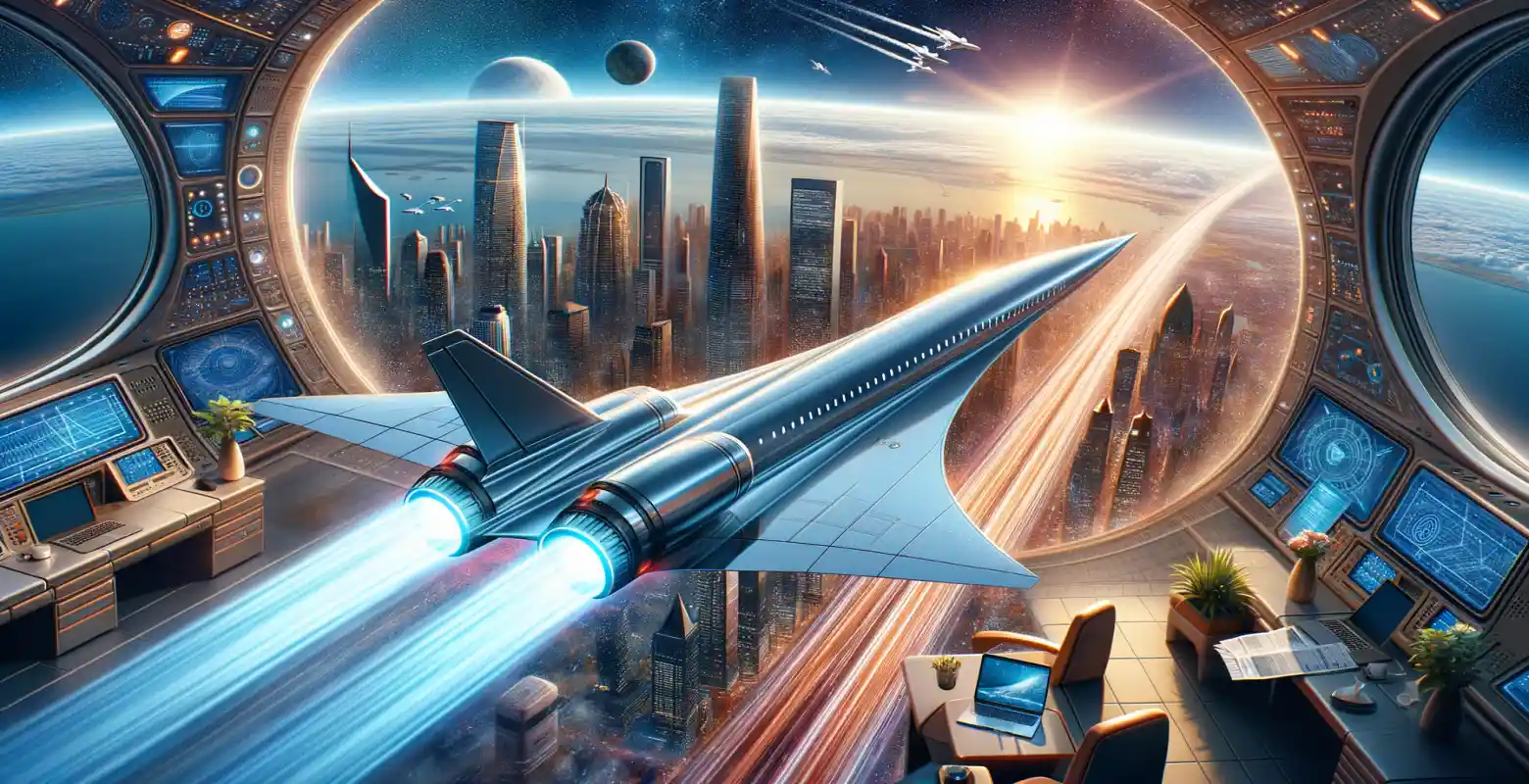The future of supersonic passenger flights
Introduction
Supersonic passenger flights, which just a few decades ago were a symbol of the future and modernity, disappeared from the aviation landscape after the retirement of the Concorde in 2003. With the development of technology and increasing interest in sustainable transport development, this topic is once again at the forefront of debates on the future of aviation. Why are we reconsidering supersonic passenger flights and what challenges and opportunities are associated with their comeback? In this article, we will look into the future of supersonic passenger flights, analyzing both the technical aspects and the potential benefits and challenges.
History of Supersonic Flights
The history of supersonic flights dates back to the 1960s when the first flight of the Concorde took place in 1969. This aircraft, a result of British-French cooperation, was one of the two commercial supersonic aircraft ever to enter service (alongside the Soviet Tu-144). The Concorde could exceed the speed of sound, reaching speeds of up to 2 Mach, significantly reducing transatlantic travel time. However, its operation was costly, and the 2000 crash and increasing requirements for efficiency and environmental protection led to its retirement in 2003.
Modern Technologies and Innovations
Today's technological challenges in the field of supersonic aviation focus on increasing fuel efficiency, reducing noise, and minimizing environmental impact. Modern technologies, such as advanced composite materials, innovative wing designs, and innovative engines, aim to overcome the limitations that influenced the fate of the Concorde.
One of the key areas of innovation is the reduction of the sonic boom, the loud noise accompanying the breaking of the sound barrier. Companies like Boom Supersonic are working on solutions that can significantly reduce this noise, allowing for broader use of such aircraft not only over oceans but also over land.
Potential Benefits of the Return of Supersonic Flights
The return of supersonic flights can bring many benefits, both for passengers, airlines, and the global economy. Shortening intercontinental travel times to a few hours can revolutionize international business travel, facilitating global cooperation and communication.
Additionally, the development of this technology can lead to the creation of new jobs in the aviation sector, both in design, production, and technical support. For airlines, the ability to offer faster flights can become a significant element of competitive advantage.
Challenges Facing Supersonic Aviation
Despite the potential benefits, supersonic flights face many challenges. Apart from noise and fuel efficiency issues, there are also legal regulations concerning flights over land and safety issues.
The costs of developing and producing supersonic aircraft are substantial, which may affect ticket prices and the availability of such flights for the average passenger. Furthermore, in an era of increasing ecological awareness, it will be necessary to ensure that new supersonic aircraft comply with international standards regarding CO2 emissions and environmental protection.
Future Trends and Perspectives
The future of supersonic flights looks promising, thanks to technological advancements and increased interest from investors and consumers. Several companies, including the mentioned Boom Supersonic and Aerion Supersonic, are working on commercial projects that have a chance of being realized in the upcoming decade.
Governments and international organizations are also beginning to recognize the potential of this technology, which may lead to a revision of regulations and support for research and innovation in this field. As new technologies develop, we can expect supersonic flights to become more accessible and sustainable.
Summary
Supersonic flights, while presenting challenges, also offer tremendous opportunities that can revolutionize the way we travel the world. The combination of modern technologies, innovative solutions, and growing interest from the industry and consumers may bring them back to our skies in the coming years. The world of aviation faces an exciting future, and the development of supersonic passenger flights is one of its most thrilling aspects.
For those following technological advancements and changes in the transportation sector, supersonic passenger flights are a topic worth observing as they could become a symbol of a new era of air travel. Will we witness the return of this dream of speed and modernity? Only time will tell, but one thing is certain – the future of aviation has never been more exciting.






Number of comments: 0